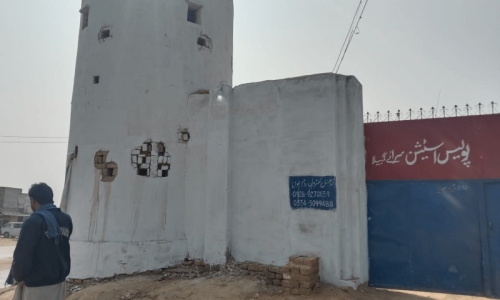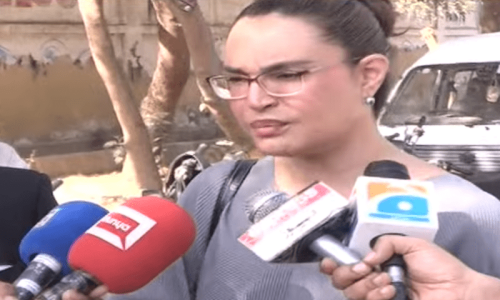ISLAMABAD: An independent panel of experts is believed to have raised red flags last year about the headrace tunnel (HRT) of the Neelum-Jhelum Hydropower Project, as well as recommending preventive measures that were not implemented before the 969-megawatt project, valued at over Rs500 billion, was shut down last month.
The shutdown of the Neelum-Jhelum Hydropower Project, which officially ceased operations on May 2, 2024, is estimated to result in direct annual losses of over Rs55bn, according to officials.
Indirect losses, due to the need for expensive replacement fuel, could range from Rs90bn to Rs150bn, depending on the fuel source. The project previously produced over 50 billion units of clean energy annually with zero fuel cost.
While an inquiry committee constituted by the prime minister is looking into the matter, officials close to the probe noted that some individuals who might have contributed to the problem during the construction phase 15 years ago were still involved, providing technical assistance to the investigation.
Recommendations, such as reinforcing tailrace tunnel with concrete lining, not implemented
Last month, PM Shehbaz Sharif formed a two-member inquiry committee to investigate the flaws in the construction of the mega hydropower project in Azad Kashmir.
Led by a former federal secretary, Shahid Khan, and incumbent Water Resources Secretary Syed Ali Murtaza, the committee was constituted after the incident of April 2, 2024, which later led to closure of the powerhouse.
The panel was asked to “ascertain the reasons for the delay in submission of the findings/report of the panel of experts, hired in September 2022, for ascertaining the cause of blockage in the tailrace tunnel” of the project and to review its final report.
“The probe and the project should be looked at with a fresh eye and with an independent mind” not only to identify causes but also highlight them and offer alternate solutions, said a hydrological expert, adding that asking the same people to carry out a technical investigation could lead to avoidance of liability and failure to highlight any design flaws.
Geographical fault
The expert pointed out that independent specialists, while investigating the tailrace tunnel (TRT) collapse of July 2022, had pointed out a big geographical fault on the main boundary thrust. The fault that caused the TRT collapse could again be the same in the case of the HRT as well, just below the Jhelum River crossing.
“Vigilance is to be exerted over all zones of mudstone/siltstone not lined with a concrete lining, including in the headrace tunnel (HRT) and the surge shaft. A properly planned remotely operated vehicle inspection of HRT should be foreseen,” said the final report prepared by the experts on the TRT collapse, seen by Dawn.
The experts’ panel basically addressed the blockage due to the collapse in the TRT but also provided recommendations for the HRT.
Even the de-watering of the project tunnel, being conducted by Wapda and the Neelum-Jhelum Company, is against the recommendations of the experts’ panel.
“As dewatering pressure tunnels is not a desirable alternative, if one wants to take advantage of the present stop of operation, an inspection by means of a remote-control vehicle should be done,” the experts suggested, adding that “the primary objectives of the ROV inspection should be to conduct a general condition
Recommendations not followed
Their report identified potential causes of collapse generated by a combination of root causes with a high probability of the presence of unidentified erodible or swelling rocks, hydraulic conditions, insufficient ground support, absence of concrete lining and long-term decompression of rock mass. Increased ground pressure and faulty construction procedures were also noted as contributing factors.
With view of this, the experts recommended the installation of a fully reinforced concrete lining in the TRT as the most appropriate long-term performance measure, pointing out that some lighter construction measures may be sufficient for safe long-term operation of the downstream surge tunnel as there is no continuous flow in it.
In addition, the expert panel recommended a precautionary approach almost two years before the Neelum-Jhelum Power Plant was shut down about two months ago because of the HRT’s stability and safety concerns.
“Considering that the tunnel boring machine (TBM)-excavated part of the HRT has been, except for some local fault crossings, lined with shotcrete, it appears prudent to check the condition of the HRT over its whole length, especially within the sections crossing through siltstone/mudstone,” the report said.
Published in Dawn, June 25th, 2024











































